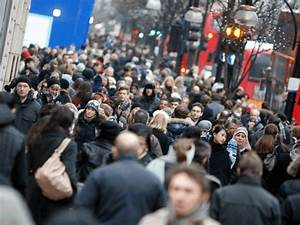
Population of France – Facts Which Can Determine Its Total Population
There are a number of factors which can determine the actual population of France. These factors include demographics, geographic location, population growth, and lifestyle and religious preferences of the population. The following are facts regarding the above mentioned points which have to be kept in mind by one who wishes to know about the population of France.
Demographic: In the present times, a person can be defined as being a part of the population if he is the first born child of parents, or if he is married or the grandchild of both parents. There are many other things, which can determine the exact population of France. For instance, the country has undergone many changes in its structure. It was at the time of the French Revolution that the name was changed to the Republic of France. However, it has also been noted that there were many changes in its economic structure, social and cultural, and political structure.
Geographic Location: The geographic location of the country has always been very important in terms of the actual population of France. Many people, who live in rural areas, are considered to be a part of the population of France. Another factor is the areas of France that are currently under development.
Population Growth: The United Nations has been keeping close tabs on the different trends of population growth in the various countries in the world. It has also been noted that in the country of France, a slow population growth is observed. Hence, it can be said that in the next few years, the population of France will continue to remain the same.
Life Style and Religious Preferences: The demographic growth has also been noted to be rather slow in France due to the fact that a large number of the population of France is Catholic. This trend has been noted for a number of years and it is predicted to continue. Hence, it can be said that this is another factor that can be used to measure the population of France.
Urbanisation: There has been a steady increase in the population of France. However, it is expected that the number of people living in rural areas will remain comparatively low due to the fact that they are not being able to take advantage of the available employment opportunities in the cities.
Basic Necessities: It is very important to know the basic needs of the French people, particularly the young generation. Hence, it is important to note that these people depend mainly on education. Further, it has been noted that there are many social problems in France which do not arise in most developed countries.
Lifestyle and Religion: It has been observed that there are many people in France who believe in Catholicism, a religion which is mostly followed by women. Thus, the population growth has been observed to be mainly due to this fact.
Total Population: The actual population of France cannot be accurately measured, since many factors may affect its growth rate. Some of the factors which have to be kept in mind are the life expectancy of a person, which is lower than that of other countries, as well as the level of literacy of the population, which is also lower.
For many, this has been noticed to be a major problem. Since there are many people who work in the service industry and live in the city, their population can be a little affected by the fact that their services may be required in the cities, but cannot be located in the countryside.
Political Configuration: The political structure of the country is also important for gauging the population of France. France has two federal states, which are known as the Alsace-Lorraine and the Languedoc-Roussillon.
Therefore, it can be said that the question of the population of France can be answered in a simple manner if one takes into consideration the above factors. In addition, there are a number of other factors which can be taken into account such as the quality of education in the country, the level of education in the local educational system, the number of jobs available for the local population, and the range of health services available in the country.






